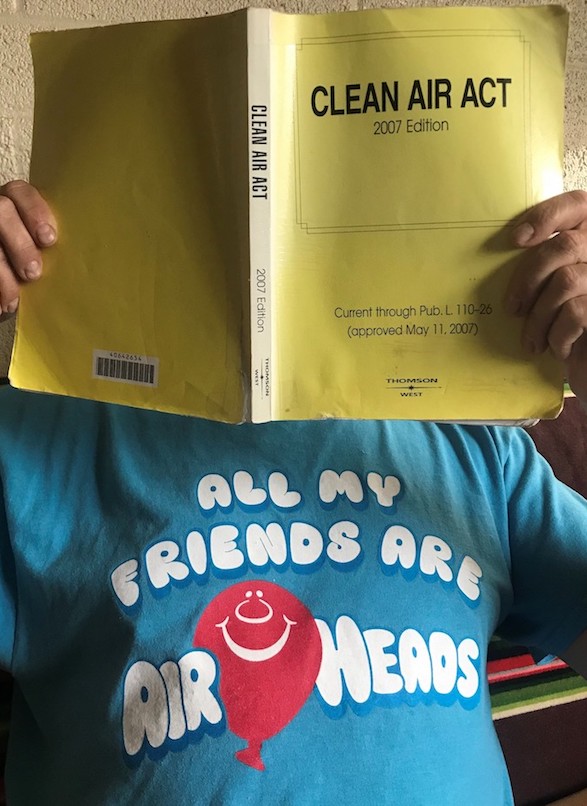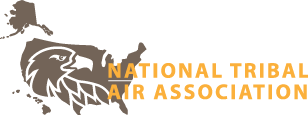 For New Airheads
For New Airheads
For New Airheads
If you are recently hired by a Tribe to do air quality work, this page is for you!
As an Air Quality Specialist, GAP Coordinator, or other position within your Tribe, NTAA created this page to help you navigate your new position and get to the resources you need.
To help advance air quality in Tribal communities, you will need to know about the Clean Air Act, how EPA, states and Tribes work together to advance air quality; get to Training Resources and help with air monitoring equipment. NTAA can help you get in touch with the people who can most be most helpful to you.
NTAA’s Introductory
Information on Air Quality

STAY IN TOUCH
Mehrdad Khatibi
[email protected]
Miranda O’Neill
[email protected]
Martha “Marty” Johnson
[email protected]

NTAA’s Introductory Information on Air Quality
NTAA: Two-Page Infographic on Tribal Air Programs
NTAA: A White Paper Detailing the Science and Connections between Air Pollution, Tribes, and Public Health
NTAA: Status of Tribal Air Report
NTAA: Fact Sheet on Tribal Treatment as a State
Clean Air Act
EPA: Overview of the Clean Air Act and Air Pollution
EPA: The Plain English Guide to the Clean Air Act
EPA: Treatment as a State
Several federal environmental laws authorize EPA to treat eligible federally recognized Indian Tribes as a state (TAS) for the purpose of implementing and managing certain environmental programs and functions, and for grant funding. The charts below identify the federally recognized Indian Tribes that have received TAS approvals for specific environmental regulatory programs, administrative functions, and grant programs. Tribes must apply for and receive EPA approval for each specific program or function.
EPA: Tribal Authority Rule (TAR) Under the Clean Air Act
The Tribal Authority Rule implements the provisions of section 301(d) of the Clean Air Act (CAA) authorizing eligible Tribes to implement their own Tribal air programs.
Providing comments from your Tribe to EPA and other federal agencies
To learn more how to track air quality and climate change policy actions and provide meaningful comments on draft rules/proposals/guidance from EPA and/or engage in meaningful consultation, please visit NTAA’s Policy Resource Kit page here to find links and helpful resources.

Air Quality
Training Resources


Air Quality Training Resources
EPA collaborates with the Institute for Tribal Environmental Professionals (ITEP) at Northern Arizona University to assist in the professional development and exchange of information for Tribal staff in order to enhance the operations and performance outcomes of environmental management. ITEP strives to achieve this by providing training in relevant and current topics by accomplished trainers who also understand the cultural aspects of Tribes throughout the United States.
ITEP: Air Quality In-Person Training Schedule and Registration
ITEP: On-line Training Courses
ITEP: Self-Paced Online Training: All materials that ITEP places online for self-paced instruction will be available for participants to access and complete at their convenience. Self-paced online training includes:
ITEP: Archived Webinars – These webinars are intended for the public to access information that was presented by live webinar and recorded.
ITEP: Instructional Videos – These videos are available online at any time and provide short, specific guidance on various topics. Instructional videos may exist as a group of videos on one topic; however, they are not intended as replacement for full classroom or web-based courses. In many cases, self-paced tutorials as well as instructor-led online courses will reference the same instructional videos that are available for viewing as stand-alone single-topic videos.
ITEP: Self-Paced Tutorials – Training material that is intended to be worked through sequentially and may or may not include video instruction.
Tribal Air Monitoring Support Center (TAMS Center)
The TAMS Center offers different training courses that focus on a variety of topics related to ambient and indoor air quality monitoring. To date, over 1,900 Tribal professionals have been trained by the TAMS Center, representing 298 Tribes. The TAMS Center also maintains a collection of well maintained and calibrated, EPA-owned monitors available on loan to Tribal air programs.
TAMS: Online Resources – Webinars, Software & Tools
TAMS: Equipment Loan Program

NTAA Resources
NTAA Resources
The National Tribal Forum on Air Quality
NTAA creates work groups to focus on various air quality issues. Currently active work groups include the Alaska Air Work Group and the Wildfire Smoke Work Group.

EPA & Other
Resources

EPA & Other Resources
What is Tribal Consultation? The EPA prepared a slide show at an information webinar for Alaskan Tribes that you can view here. You can sign up for tribal consultation notifications from EPA here. You can learn more about EPA consultation here.
EPA: Tribal Air and Climate Resources
EPA: Resources for Environmental Protection in Indian Country
EPA: Environmental Programs and Technical Assistance on Tribal Lands
EPA: Organization Chart for EPA’s Office of Air and Radiation
This link provides contacts in EPA’s Headquarters and Regional Offices specifically trained on tribal air quality issues.
Tribal Authority Rule (TAR) Under the Clean Air Act
The Tribal Authority Rule implements the provisions of section 301(d) of the Clean Air Act (CAA) authorizing eligible Tribes to implement their own Tribal air programs.
Clean Air Act Advisory Committee
The Clean Air Act Advisory Committee (CAAAC) is a senior-level policy committee established in 1990 to advise the U.S. EPA on issues related to implementing the Clean Air Act Amendments of 1990. The committee meets two times a year, normally in Washington, D.C. The Assistant Administrator for the Office of Air and Radiation determines the committee agenda, and the CAAAC provides advice to the Agency on critical air quality policy issues during face-to-face meetings and through specific workgroup reports.
Important Air Quality Organizations
National Association of Clean Air Agencies
California Air Resources Board
Air & Waste Management Association
Western Regional Air Partnership
Important Tribal Organizations
National Congress of American Indians
NCAI maintains a list with web links to Tribal Organizations.


